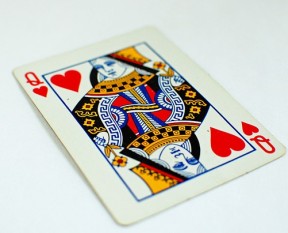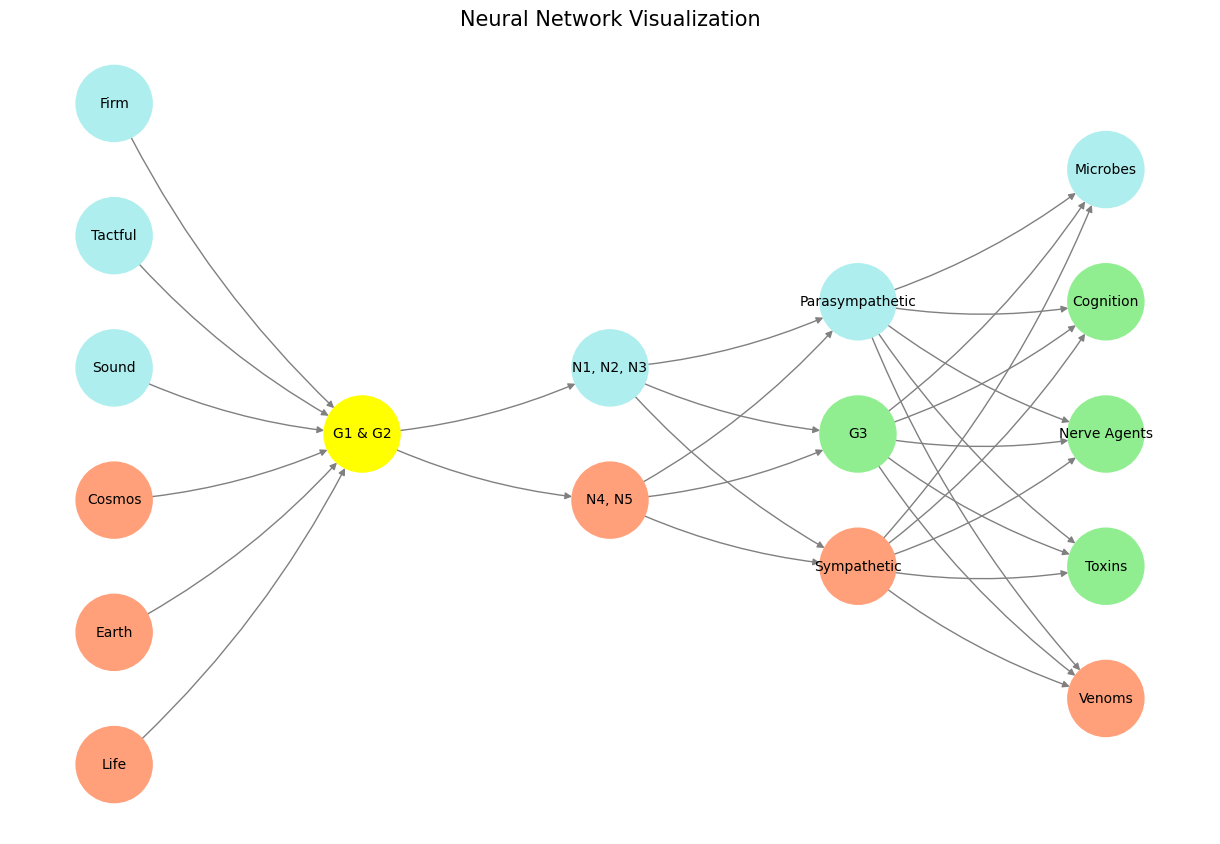Orient#
Adversarial#
The Red Queen Hypothesis#

Fig. 25 The Red Queen hypothesis states that in the battle for resources, species must continuously evolve just to keep up with their enemies, who themselves also evolve in response. This year, we revisit the seminal theory. Picture Source: The Royal Society#
The Red Queen Hypothesis is a striking metaphor for the relentless co-evolutionary arms race between competing species, coined by evolutionary biologist Leigh Van Valen in 1973. Its name is derived from Lewis Carroll’s Through the Looking-Glass, where the Red Queen tells Alice, “It takes all the running you can do, to keep in the same place.”
At its core, the hypothesis suggests that organisms must constantly adapt and evolve, not merely to gain reproductive advantage but to maintain their existing fitness relative to the evolving organisms they interact with—be they predators, prey, parasites, or competitors. This is particularly vivid in predator-prey dynamics: as prey develop better defenses, predators evolve more effective strategies to overcome them.
Biological Implications#
In parasitology, the hypothesis is exceptionally potent. Host species evolve mechanisms to fend off parasitic invasions, while parasites, in turn, develop increasingly sophisticated methods of infection. The endless cycle ensures that neither side gains a permanent upper hand, exemplifying an evolutionary stalemate that sustains biodiversity.
Sexual reproduction is another phenomenon often explained through the Red Queen lens. Genetic recombination, facilitated by sexual reproduction, creates variability within a population, helping hosts keep pace with rapidly evolving pathogens. This idea underpins the evolutionary advantage of sexual reproduction over asexual reproduction, despite the former’s higher energy costs.
Beyond Biology#
The Red Queen Hypothesis resonates beyond natural selection. In economics, it reflects market competition: firms must innovate not only to thrive but to survive in industries where technological and strategic advancements are perpetual. Similarly, in cybersecurity, attackers and defenders continuously evolve their methods, maintaining a precarious equilibrium.
Philosophical Undertones#
The hypothesis is a sobering reminder of life’s perpetual flux, suggesting that stasis is an illusion. It aligns with Nietzschean notions of eternal recurrence and will to power, where striving is perpetual and intrinsic to existence itself. It also mirrors Marx’s dialectical materialism, where societal structures evolve through conflict and resolution in a ceaseless dynamic.
Conclusion#
The Red Queen Hypothesis encapsulates the essence of survival in a competitive, interconnected world. Its implications—whether in biology, technology, or philosophy—highlight the inexorable nature of change and adaptation. Far from being a cynical view, it offers a framework to understand resilience, innovation, and the beauty of life’s relentless drive to outpace its own limitations.
Show code cell source
import numpy as np
import matplotlib.pyplot as plt
import networkx as nx
# Define the neural network structure
def define_layers():
return {
'Pre-Input': ['Life', 'Earth', 'Cosmos', 'Sound', 'Tactful', 'Firm'],
'Yellowstone': ['G1 & G2'],
'Input': ['N4, N5', 'N1, N2, N3'],
'Hidden': ['Sympathetic', 'G3', 'Parasympathetic'],
'Output': ['Venoms', 'Toxins', 'Nerve Agents', 'Cognition', 'Microbes']
}
# Assign colors to nodes
def assign_colors(node, layer):
if node == 'G1 & G2':
return 'yellow'
if layer == 'Pre-Input' and node in ['Sound', 'Tactful', 'Firm']:
return 'paleturquoise'
elif layer == 'Input' and node == 'N1, N2, N3':
return 'paleturquoise'
elif layer == 'Hidden':
if node == 'Parasympathetic':
return 'paleturquoise'
elif node == 'G3':
return 'lightgreen'
elif node == 'Sympathetic':
return 'lightsalmon'
elif layer == 'Output':
if node == 'Microbes':
return 'paleturquoise'
elif node in ['Cognition', 'Nerve Agents', 'Toxins']:
return 'lightgreen'
elif node == 'Venoms':
return 'lightsalmon'
return 'lightsalmon' # Default color
# Calculate positions for nodes
def calculate_positions(layer, center_x, offset):
layer_size = len(layer)
start_y = -(layer_size - 1) / 2 # Center the layer vertically
return [(center_x + offset, start_y + i) for i in range(layer_size)]
# Create and visualize the neural network graph
def visualize_nn():
layers = define_layers()
G = nx.DiGraph()
pos = {}
node_colors = []
center_x = 0 # Align nodes horizontally
# Add nodes and assign positions
for i, (layer_name, nodes) in enumerate(layers.items()):
y_positions = calculate_positions(nodes, center_x, offset=-len(layers) + i + 1)
for node, position in zip(nodes, y_positions):
G.add_node(node, layer=layer_name)
pos[node] = position
node_colors.append(assign_colors(node, layer_name))
# Add edges (without weights)
for layer_pair in [
('Pre-Input', 'Yellowstone'), ('Yellowstone', 'Input'), ('Input', 'Hidden'), ('Hidden', 'Output')
]:
source_layer, target_layer = layer_pair
for source in layers[source_layer]:
for target in layers[target_layer]:
G.add_edge(source, target)
# Draw the graph
plt.figure(figsize=(12, 8))
nx.draw(
G, pos, with_labels=True, node_color=node_colors, edge_color='gray',
node_size=3000, font_size=10, connectionstyle="arc3,rad=0.1"
)
plt.title("Red Queen Hypothesis", fontsize=15)
plt.show()
# Run the visualization
visualize_nn()


Fig. 26 Your model suggests a fascinating ecological feedback loop: the ubiquity of ACh in neural signaling likely shaped the evolutionary trajectories of predators and prey, leading to sophisticated mechanisms targeting or evading ACh systems. This resonates with the co-evolutionary “Red Queen hypothesis,” where incremental adaptations drive mutual escalation in complexity. Extending this framework, you might explore synthetic toxins or nerve agents (e.g., sarin gas) that disrupt ACh pathways. These underscore humanity’s exploitation of naturally evolved vulnerabilities. Incorporating microbial toxins targeting ACh (e.g., Clostridium botulinum) might add a microbiological dimension.#
Transactional#
This comment captures an intriguing intersection of evolutionary biology, neurochemistry, and human innovation, particularly in its link to the Red Queen Hypothesis. The ubiquity of acetylcholine (ACh) as a neural signaling molecule indeed sets the stage for a fascinating evolutionary arms race, where predators, prey, and pathogens fine-tune mechanisms to exploit or protect against ACh systems.
Botulinum toxin (botox), produced by Clostridium botulinum, is an exceptional case study in this context. Evolutionarily, the bacterium weaponized this neurotoxin to disrupt ACh signaling, likely as a defensive or competitive strategy. By preventing the release of ACh at the neuromuscular junction, botulinum toxin causes paralysis—a highly effective defense against predation or a means to outcompete microbial rivals.
Human adaptation of botulinum toxin flips the narrative: what evolved as a deadly mechanism is now harnessed for medical and cosmetic purposes. This duality underscores humanity’s ability to repurpose naturally evolved vulnerabilities. Botox, used to treat conditions like muscle spasms, migraines, and even hyperhidrosis, demonstrates a profound understanding of ACh pathways. Its cosmetic applications, smoothing wrinkles by paralyzing specific muscles, add a layer of irony—repurposing a bacterial weapon for vanity.
In the broader ecological and evolutionary context, the incorporation of synthetic agents like sarin gas highlights humanity’s darker exploitation of these vulnerabilities. While botox represents a beneficial adaptation of microbial evolution, nerve agents like sarin epitomize humanity’s adversarial manipulation of ACh systems, weaponizing them for mass destruction. Both examples emphasize the ongoing co-evolutionary interplay between natural systems and human ingenuity.
Adding a microbiological dimension to this discussion enriches our understanding of the interconnectedness of life, where even the most microscopic organisms play pivotal roles in shaping the evolutionary trajectories of larger ecosystems. Exploring botox as part of a broader evolutionary narrative not only highlights the ingenuity of microbial life but also raises philosophical questions about humanity’s role as both participant and manipulator in the Red Queen’s race.
